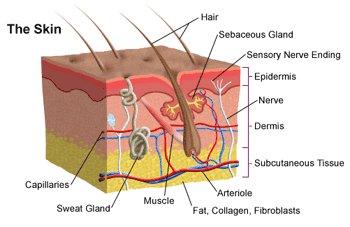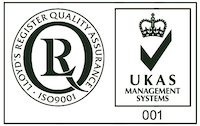HOW TO CARE FOR YOUR TATTOO
HOW TO CARE FOR YOUR NEW TATTOO
DO
- Wait 2-4 hours before removing the dressing. Your artist may have applied cling film, melanin dressing or gauze.
- Wash your hands with antibacterial soap before removing the dressing.
- Use plain warm water to clean the skin over your new tattoo.
- DO NOT use a face/wash cloth. Skin on skin is best. Gently use your hand to remove any old blood, mucous or debris.
- Pat dry using a paper towel or clean hand towel. Allow to air dry for a few minutes.
- Apply a small amount, a light film, of your aftercare product.
- Gently massage into the skin.
- Do not over apply.
Remember your skin has gone through trauma having been punctured with a row of needles thousands of times while unloading the ink. So gently does it. - Do not recover the skin unless your tattoo is oozing fluid. Loose clothing should be sufficient to protect your skin.
- Apply another light film, sparingly, of aftercare 4 hours later.
- Wash the tattoo again at night with warm water and apply another fine layer of aftercare.
Keeping the skin supple and moisturised during the healing process lessens the chances of scabbing. - As the healing process progresses washing the tattooed skin with water once a day will be sufficient cleansing. Apply a light application of aftercare 2-4 times daily until the skin has fully healed.
DON’T
- Wear clothes that rub or chafe your skin.
- Soak your skin in water for the first four weeks. i.e. Swimming, sauna, water sports. Showering is okay.
- Scratch or pick your Tattoo.
- Expose your tattoo to the sun or sunbeds. Apply a high factor 30 – 50 sunscreen to protect your tattoo colours.
HEALING PROCESS
As your skin begins to heal the weeping should have stopped. There might be some areas that start to scab. Some people are prone to scabbing. Overworked areas can cause scabbing.
On other areas the skin might start to lightly flake (like skin that peels after sunburn). This is normal and more noticeable with heavily coloured and full black tattoos.
This light flaking may continue for several days then the skin might go shiny – also a bit wrinkly. This is the top layer of skin healing. During this time, the skin may become itchy and will be fragile.
After a few days, the skin can look duller. This is not how your healed tattooed skin will be. The top and middle layer of skin is undergoing a healing process. As both layers of skin heal your tattoo will start to look brighter.
The top layer of skin can appear to be fully healed after a few days, but the middle layer can still be undergoing change so continue to take care of your skin. If your skin does scab do not pick them. This can introduce infection and can pull ink out leaving gaps in your ink work. Keep the area moisturised and allow the scabs to fall off naturally. Keeping the skin moisturised and supple will help prevent scabbing.
The body is amazing so remember the skin always eventually heals. What you are trying to do is take care of it in a way that aids this process maximising the benefits a good aftercare routine offers.
LONG TERM CARE
The ink is placed in the dermis layer of the skin. You view your tattoo looking through the epidermis layer of the skin into the dermis layer.
How you care for that top layer of skin will affect how your tattoo looks. Bright healthy skin will give a clearer brighter tattoo. Dull skin can make your tattoo look jaded.
Moisturising and sun block play an important part in the long-term care of tattooed skin.
IN THE SUN
Use a sun block when you are in the sun and avoid using sun beds. The sun is the greatest enemy of tattooed skin and will do more damage than anything else you do.
TATTOO INK POSITION

The skin is made up of three layers – the Epidermis, the Dermis and Subcutaneous tissue.
WHERE DOES THE INK GO?
Tattoo needles enter the skin through the epidermis into the dermis. It is in the dermis layer that the ink is placed.
FAQ’s
Q. HOW LONG WILL IT TAKE MY TATTOO TO HEAL?
A. The length of time tattooed skin takes to heal is dependent on:
- Your general health. Certain medical conditions can affect your healing experience.
- The position of the tattoo on the body.
- The size of the tattoo.
- The ink colours
- The skill of the artist
- How the skin was cared for afterwards.
- The aftercare used.
The top layer of skin can appear to be healed in 4-7 days. The layers of skin underneath can take a few weeks and sometimes longer to heal fully. The skin is the largest organ of the human body and is also the most versatile.
Q. DO I HAVE TO USE A SPECIAL SOAP?
A. We recommend that you do not use any soap. Warm, plain water is sufficient. Repeated or prolonged washing with soaps will remove the protective sebum layer and cause the skin to lose its natural barrier protection.
Q. I HAVE BEEN TOLD TO RE-COVER MY TATTOO WITH CLING FILM (PLASTIC WRAP) AFTER CLEANING IT?
A. Cling film (Plastic wrap) should only be kept on until you get home and go to wash your skin for the first time. Loose clothing should be sufficient covering for your Tattoo. If you recover with plastic wrap be mindful that:
Q. MY TATTOO IS STILL OOZING FLUID. WHAT CAN I DO TO STOP THIS?
A. Treat the area gently. Lightly clean the area with warm water. Dab dry using a clean towel or tissue, do not rub, and allow to air dry for a few minutes. Repeat the process very gently if required. Apply a light film of aftercare, (less is more!). If you need to apply a dressing, choose a non-stick dressing. If the dressing sticks when you go to remove it, use warm water to gently soak the dressing off. Repeat the above process.
The excretions will stop as the healing progresses. If the secretions continue leave the skin for a day without any aftercare and allow it to dry out. Then follow the above.
Q. WILL INK BE PULLED OUT BY THIS?
A. It is fluid leaving the body from the glands – it should not affect the ink.
Q. CAN I HAVE A PROBLEM BECAUSE MY SKIN WAS SHAVED BEFORE GETTING A TATTOO?
A. The razor can be brought against the skin a number of times when shaving to this can irritate the skin before the tattooing process begins.
When the hairs grow back sometimes, they can turn back on themselves and other times grow squint. This can cause pimples about 2-5 days after tattooing. Many areas need to be shaved before tattooing so if the area of skin to be tattooed is very hairy discuss with your tattooist about preparing this area beforehand.
OTHER COMMON PROBLEMS THAT CAN BE AVOIDED:
Over cleaning, vigorous cleaning, or using a cleanser that is too strong.
Over application of aftercare, thick layers of aftercare applied making the skin sweat,
and trapping lymph fluid that needs to be exuded – this can cause a “bubbling” effect on the skin. It can also cause pimples.
Friction caused by tight restrictive clothing.
Poor general health i.e. having a tattoo when you are ill.
Work environment not conductive to keeping your tattoo clean
Q. I HAVE REDNESS AND STINGING WHEN I APPLY MY AFTERCARE?
A. An aftercare product should soothe the skin. The skin has been traumatized during the tattooing process and can be sensitive. There may be an initial stinging when you apply the aftercare, but you would expect it to stop shortly after application and the skin begin to feel soothed.
If the redness gets worse each time you apply the aftercare product stop using the product. You may have had an allergic or irritant reaction to cleaning products or your aftercare.
TREATMENT
- Stop using any product you are applying to your skin.
- Avoid using any soap or cleanser.
- An over the counter painkiller and antihistamine tablets can help ease the irritated skin.
- Use ice cubes wrapped in a cotton cover to ease swelling and redness (do not apply ice cubes direct onto the skin)
- As redness subsides start using an aftercare product which contains skin soothing agents.
- Do not squeeze or pick any blisters. If irritation is prolonged or worsens your doctor will advise best treatment.
Q. IS It POSSIBLE TO HAVE AN ALLERGIC REACTION TO TATTOO INKS
Allergic Reaction to Tattoo Inks – are exceedingly rare but can happen. If you were allergic to the tattoo ink, then that area would never fully heal. Certain hues of red, blue and greens seem to be the most common colours for allergies and black ink the least.
Sometimes, years later certain areas of your tattooed skin can become itchy, quite often with direct sunlight. Applying a dry skin moisturiser seems to help and the area goes back to normal after a time.
FINAL NOTE
Your inkwork is unique to you. You may have a different healing experience to others. The information provided is based on the collective experience. Most people have a trouble-free healing process and the only thing they are thinking about is how great their tattoo is and what tattoo to get next


